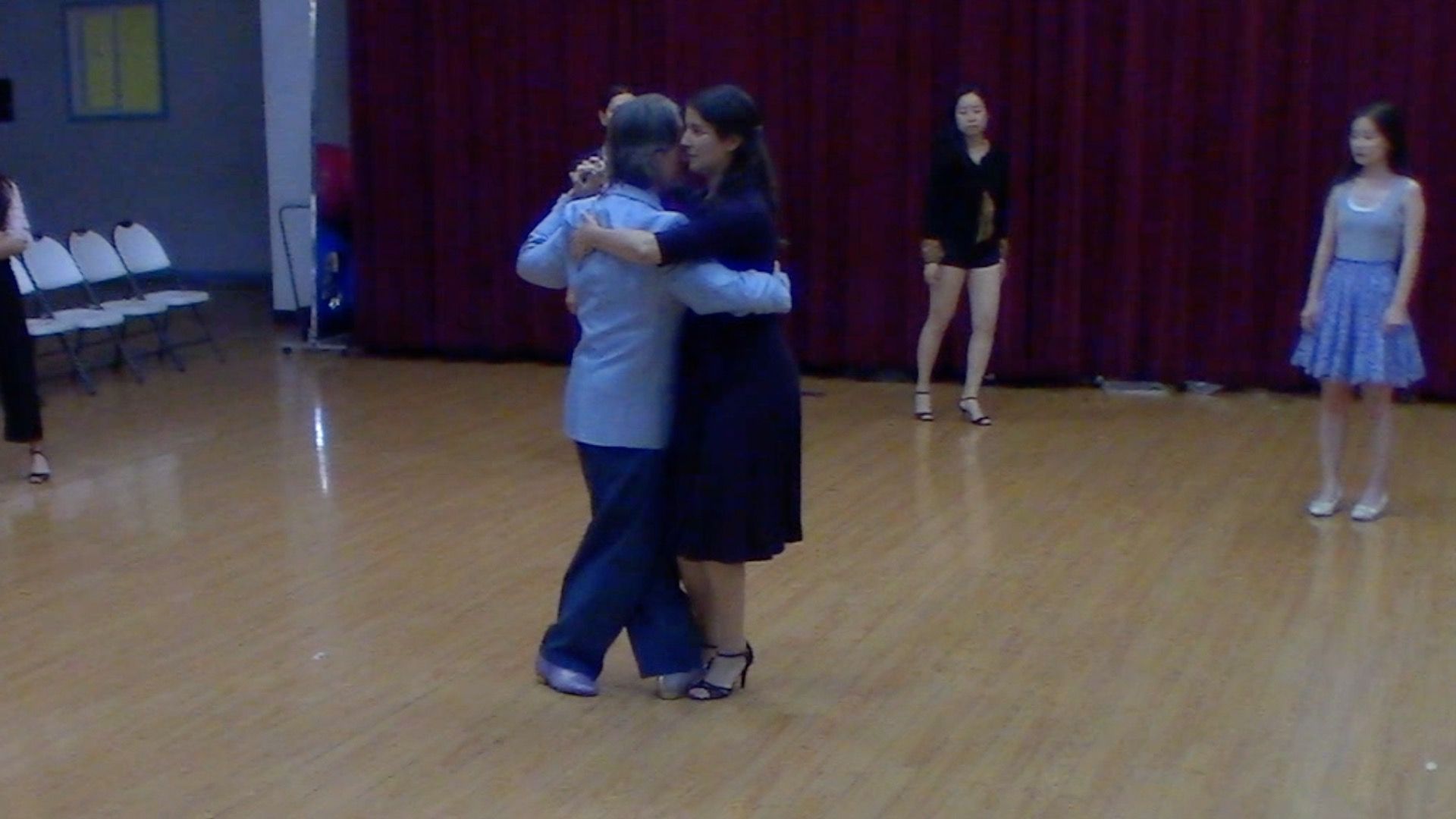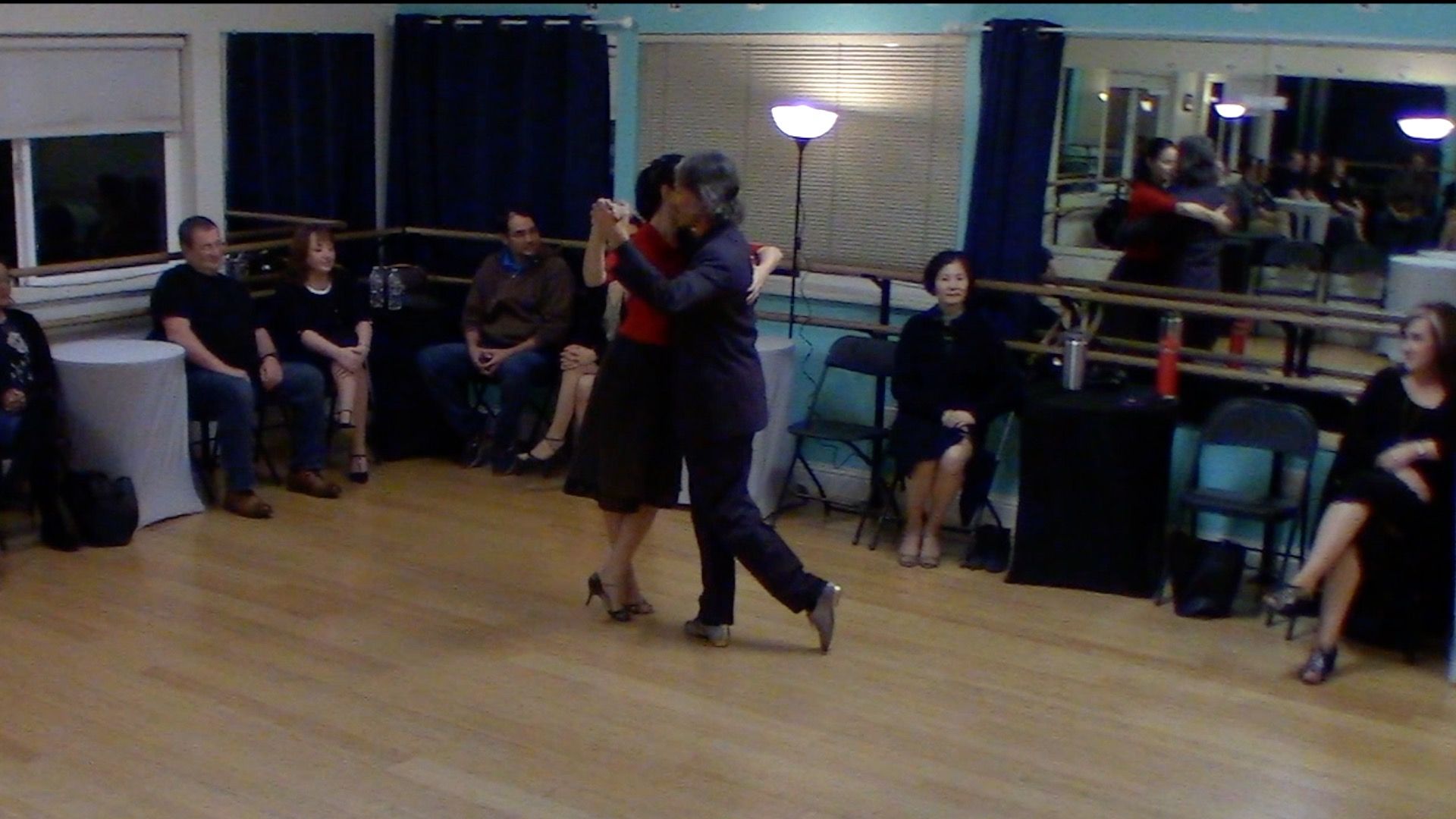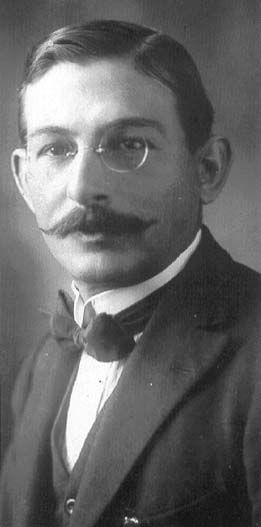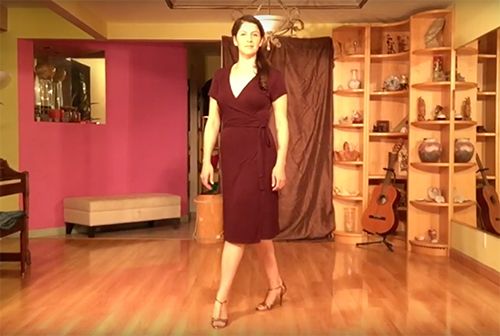Argentine Tango dancing with Mimi at a beginner class in San Jose
Argentine Tango dancing with Mimi at a beginner class in San Jose
What is dancing and why do we feel so at home when dancing?
Civilization has required the silencing of our bodies. Where, otherwise, would the indeterminable complexity of our anatomy would fit? A great split was initiated: the spirit manifested in words and our bodies went on to construct civilization. Words are easy to control: “Don’t say that!”. On the other hand, how does one prohibit certain moves? The entire body was proscribed from expression, there, where the influence of those who negate themselves could reach. Condemned to build, the slaved bodies danced in their creation of steel and concrete, through the machines they invented, with the technology they deliver to us.
Now, we have accepted their invitation…
- More performances by Marcelo Solís
- Video lessons
- More performances by other Argentine Tango Maestros
If you are in the San Francisco Bay Area and want to learn to dance Tango, you can:
Learn to dance Argentine Tango

Private lessons
Are the way to learn Argentine Tango
-
At our private lessons we work intensely on foundations, rhythm, musicality and connection with partner. We design a program according to your own goals and requirements.
-
While group classes are necessary to work on the social aspects of this beautiful art form, during private lessons we focus on the specific details of your dance which are important in achieving your goal of being a great dancer, a true milonguera or milonguero.

























